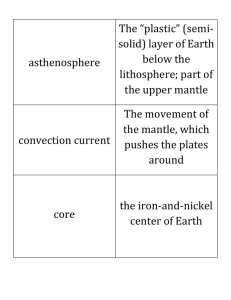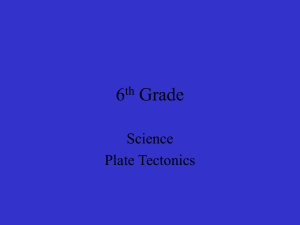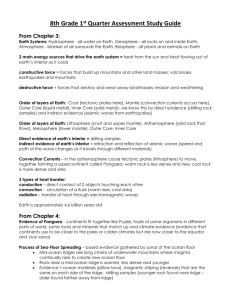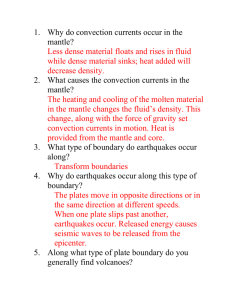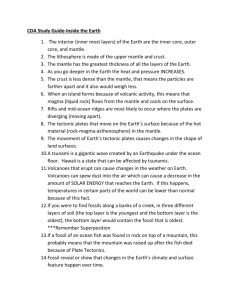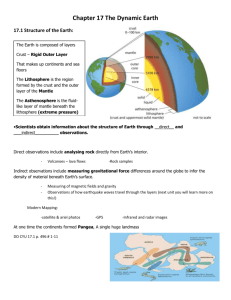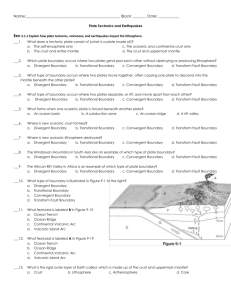Glossary - Compass
advertisement
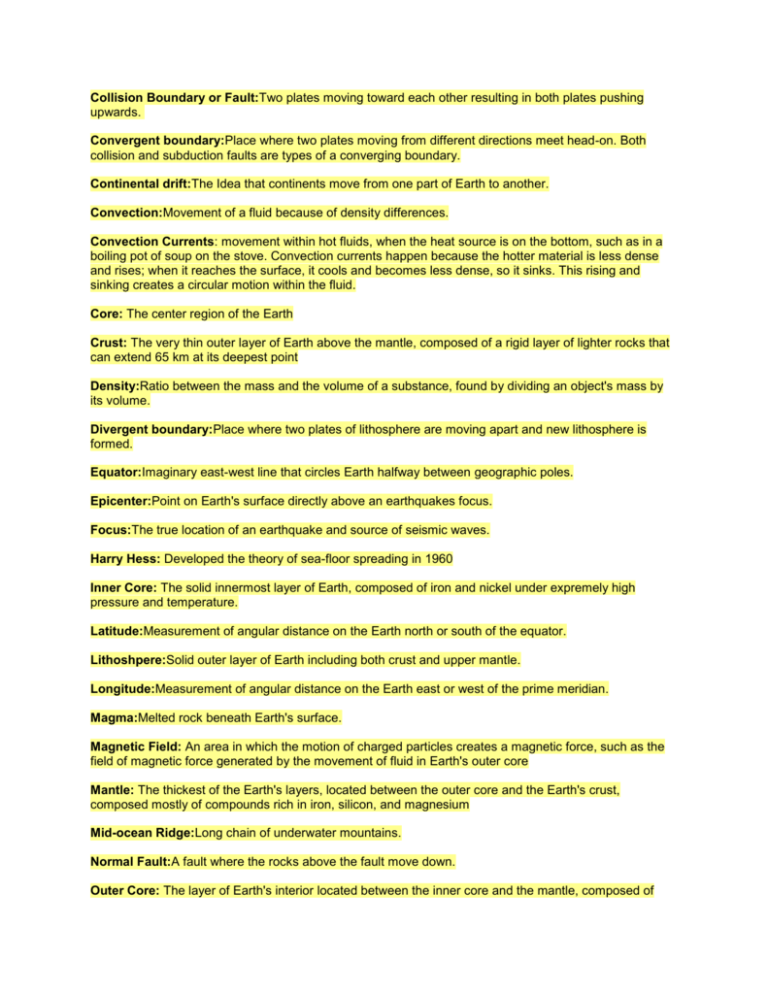
Collision Boundary or Fault:Two plates moving toward each other resulting in both plates pushing upwards. Convergent boundary:Place where two plates moving from different directions meet head-on. Both collision and subduction faults are types of a converging boundary. Continental drift:The Idea that continents move from one part of Earth to another. Convection:Movement of a fluid because of density differences. Convection Currents: movement within hot fluids, when the heat source is on the bottom, such as in a boiling pot of soup on the stove. Convection currents happen because the hotter material is less dense and rises; when it reaches the surface, it cools and becomes less dense, so it sinks. This rising and sinking creates a circular motion within the fluid. Core: The center region of the Earth Crust: The very thin outer layer of Earth above the mantle, composed of a rigid layer of lighter rocks that can extend 65 km at its deepest point Density:Ratio between the mass and the volume of a substance, found by dividing an object's mass by its volume. Divergent boundary:Place where two plates of lithosphere are moving apart and new lithosphere is formed. Equator:Imaginary east-west line that circles Earth halfway between geographic poles. Epicenter:Point on Earth's surface directly above an earthquakes focus. Focus:The true location of an earthquake and source of seismic waves. Harry Hess: Developed the theory of sea-floor spreading in 1960 Inner Core: The solid innermost layer of Earth, composed of iron and nickel under expremely high pressure and temperature. Latitude:Measurement of angular distance on the Earth north or south of the equator. Lithoshpere:Solid outer layer of Earth including both crust and upper mantle. Longitude:Measurement of angular distance on the Earth east or west of the prime meridian. Magma:Melted rock beneath Earth's surface. Magnetic Field: An area in which the motion of charged particles creates a magnetic force, such as the field of magnetic force generated by the movement of fluid in Earth's outer core Mantle: The thickest of the Earth's layers, located between the outer core and the Earth's crust, composed mostly of compounds rich in iron, silicon, and magnesium Mid-ocean Ridge:Long chain of underwater mountains. Normal Fault:A fault where the rocks above the fault move down. Outer Core: The layer of Earth's interior located between the inner core and the mantle, composed of iron and nickel in a liquid state Outer Mantle: Upper part of the Earth's mantle which contains both the lower part of the lithosphere and the athenosphere Pangaea: Name of the hypothetical great continent thought to have split into the landmasses known today; a word coined by meteorologist Alfred Wegener from the Greek pan andgaie, meaning "all" and "land". Plate:Large moving section of lithosphere that contains continents and seafloor. Plate tectonics:Theory that solid plates made of the lithosphere move on top of the putty like asthenosphere. Reverse fault:A fault where the rocks above the fault move up. Richter scale:Numerical description of the size of seismic waves produced by an earthquake. Ridge Push: A force that is exerted by cooling, subsiding rock on the spreading lithospheric plates at a mid-ocean ridge Rift:Deep valley which runs down the middle of a mid-ocean ridge. Rift Valley: A deep valley at a point where lithospheric plates are moving apart, such as at a mid-ocean ridge Seafloor spreading:Theory that seafloor crust forms at mid-ocean ridges and then spreads in opposite directions. Seismic wave:Vibration produced by an earthquake . Seismograph:Instrument that measures and records seismic waves. Shield cone:Volcanic mountain with a broad base and gently sloping sides, made from lava flows. Slab Pull: A force at a subduction boundary that the sinking edge of the subducting plate exerts on the rest of the plate. Sliding boundary:Place where two plates meet and slide past each other. Also known as a transform fault. Strike-slip fault:Fault where the rocks on either side of the fault break and slide past each other. Subduction:Pushing of the edge of one plate below the edge of another. Subduction Boundary: A convergent boundary where an oceanic plate is plunging beneath another, overriding plate Transform Boundary or Fault:Place where two plates meet and slide past each other. Also known as a sliding boundary. Volcano: Opening in Earth's crust where melted rock reaches Earth's surface.


